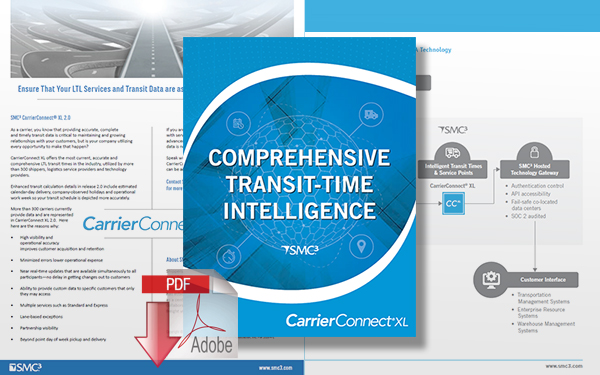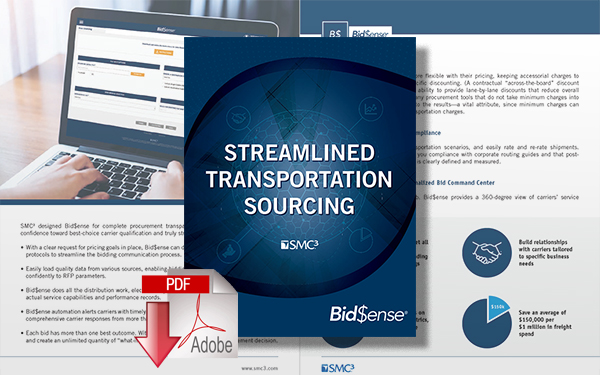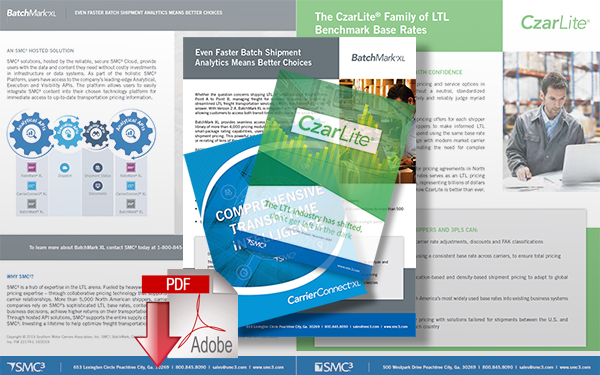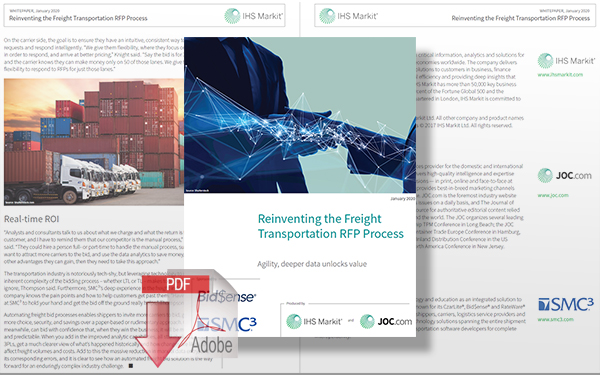Finding Stability in a Turbulent Truckload Market

While there are many positive signs moving forward, the truckload market is inherently volatile and cyclical, and the market constantly balances shifts in supply and demand.
The U.S. Truckload Market
The U.S. truckload market has been through a prolonged period of historic instability, caused by the convergence of a multitude of factors.
Capacity constraints due to a surge in online orders for physical goods during the pandemic; the global pandemic itself prompted lockdowns and labor shortages at crowded U.S. West Coast ports.
The ongoing truck driver shortage and retention challenges; the lack of available parts, mostly semiconductor chips, needed to fulfill new truck orders and grow the fleet.
As we appear to turn the corner on the current state of comparative stability, it’s tempting to hope the last two tumultuous years of extreme disruption are in the rearview.
It remains a dynamic environment though; rates are decreasing and costs are rising.
Contract rates are expected to decrease later this year or the early part of 2023 - following spot market rates that have declined 14 percent since the all-time peak in January 2022.
With that said, it remains complex to find that break-even point.
Dependability Comes with Cost Accounting
While there are many positive signs moving forward, the truckload market is inherently volatile and cyclical.
The market constantly balances shifts in supply and demand. Even before the pandemic, the truckload market experienced volatility in 2017 and 2018 as demand decreased and capacity tightened.
The end of 2019 saw truckload capacity further pinch - just before the global pandemic hit and led to massive supply chain disruption.
Any balance in equilibrium is typically short-lived and the pendulum continually swings.
Through cost accounting, carriers can make better decisions - in inflationary and deflationary times.
SMC³’s Cost Intelligence System provides a freight costing tool that helps carriers achieve profitability despite market forces. It provides data and visibility far beyond a linehaul move from one point to another.
Loads need to be tied to the activities that move them - empty miles for short-haul deliveries, round trips for longer haul loads, and stop and time-basis costs that shouldn’t be hidden in cost per mile.
The Cost Intelligence System also takes into consideration specialty equipment, such as whether a tank wash was required, as well as other extra costs including regional tolls and accessorial services. With all of this data, carriers can get to the true cost of a load and improve their profitability.
Not All Loads are Equal
Carriers that use averages and historical views versus drilling down and applying costs accurately tend to draw the wrong conclusions.
Having more data - and cleaner data - allows the carrier to assign costs appropriately to the loads they moved and consequently the customers associated with those moves.
A carrier shouldn’t simply assume its largest customer is its most profitable customer. Having data and visibility into all the loads carried for that customer will provide the true measure of the profitability of each customer.
Having good dispatch data can make all the difference in getting more accurate results.
Carriers need to look at each driver’s activity in chronological order, knowing when he or she leaves their domicile (personal home, terminal or drop yard) to begin a round trip, where loadings and unloadings occur, and any other stops that take place until the driver returns back to domicile.
Tracking dispatch data has improved over the years with systems that make this information more reliable. CIS seamlessly integrates this data into its algorithms for calculating the true cost of each load, lane, and customer.
Where Dependability and Profitability Meet
It’s very difficult to make the right decisions for a truckload operation if you don’t have a clear view of how profitable your business and your customers are. Using cost accounting practices, especially in an environment where rates are falling, helps to better allocate costs, reveals operational issues, and empowers truckload carriers to ultimately make better pricing decisions.
All of this can lead to greater profitability for the carrier while instilling dependability into the operation when market forces inevitably shift.
To learn more about SMC³’s Cost Intelligence System visit the SMC3 Resource Hub, contact a sales representative at [email protected], or download the CIS case studies here.
Related Papers
Comprehensive Transit-Time Intelligence - SMC3’s CarrierConnect XL Platform
When integrated with the leading transportation management systems, CarrierConnect XL adds unparalleled transit and service information for greater transportation efficiency. Download Now!
Bid$ense: Streamlined Transportation Sourcing
This paper details how using Bid$ense leverages SMC³’s lifetime of transportation purchasing knowledge, allowing customers to incorporate pricing, claims ratios, on-time performance, and transit times into their LTL bidding analysis. Download Now!
Analyzing and Predicting Freight Transportation Costs
In these 3 resources, BatchMark XL, CarrierConnect XL, and CzarLite, we detail how to ensure accurate freight billing across every carrier agreement, uncover potential freight bill invoice errors, and assist with price negotiation and planning. Download Now!
Reinventing the Freight Transportation RFP Process
In this white paper, we describe how using a tech-enabled freight bid system allows for more freight providers to be considered, greatly improving choice and the ability to tailor your service around more than just price. Download Now!
More SMC³ Resources
Related Article: How Seasonal Changes Impact Freight Embargoes
Article Topics
SMC3 News & Resources
Mastering LTL Shipping: Strategies to Become the Carrier’s Top Choice Career Success in LTL: Insights from Industry Veterans Effective Strategies for Last Mile Returns in LTL Logistics SMC3 Mercury Gate Case Study - Improving Workflows and Enhancing Efficiency with LTL APIs SMC3: Is Technology a Competitive Advantage in the Modern Supply Chain Industry? Armada’s Prather examines the disconnect between the freight economy and the macro economy at SMC3 JumpStart 2024 SMC³’s Solution to the Logistics Industries Talent Problem More SMC3Latest in Transportation
Baltimore Opens 45-Foot Deep Channel Following Bridge Collapse El Paso Border Delays Cost Juarez $32 Million Per Day in Economic Losses Ranking the World’s 10 Biggest Supply Chains The Top 10 Risks Facing Supply Chain Professionals Walmart’s Latest Service: Ultra Late-Night Delivery City of Baltimore Files Lawsuit to Recoup Money for Collapsed Bridge The Era of Self-Driving Tractor-Trailers Set to Begin More Transportation


















